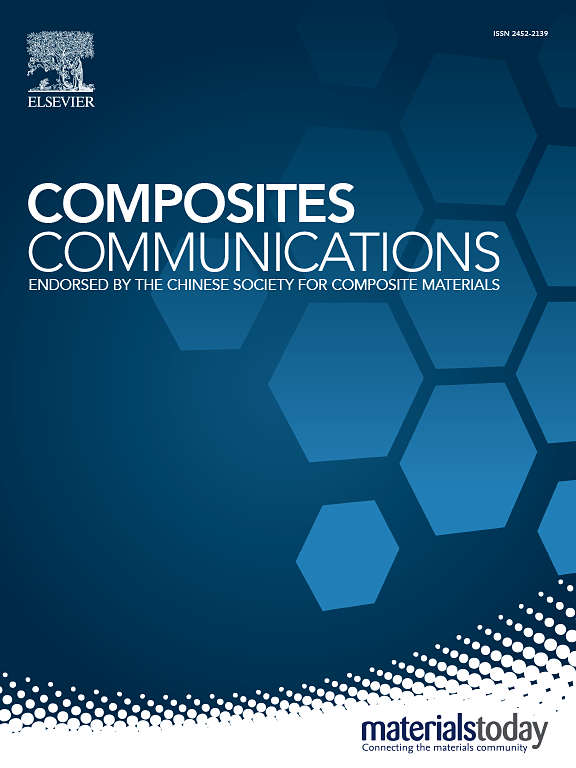通过共热解将废磷酸铁锂阴极和废塑料转化为高性能钠离子电池阳极
IF 6.5
2区 材料科学
Q1 MATERIALS SCIENCE, COMPOSITES
引用次数: 0
摘要
随着磷酸铁锂(LFP)电池和废弃超高分子量聚乙烯(UHMWPE)产品的日益普及,先进的回收策略在可持续资源开发中引起了极大的兴趣。但是,必须有效地解决程序繁琐和危险废物处置不当等挑战。在这项工作中,我们提出了一种简化和经济的方法,将废旧LiFePO4阴极废物转化为一种新型钠离子电池负极材料。利用废塑料在高温下催化制备碳纳米管(CNTs),制备了一种新型负极材料R-Fe2P/CNT,该材料具有良好的长期循环稳定性(在1.0 ag−1下循环600次后容量保持率为86.36%)和速率能力。此外,密度泛函理论计算表明,R-Fe2P/CNT复合材料的钠吸附性能得到改善,电子导电性增强。这一策略有效地回收了废旧电池和塑料中的有价值成分,为功能材料的制备提供了一种新的“以废治废”的概念。本文章由计算机程序翻译,如有差异,请以英文原文为准。

Transforming spent lithium iron phosphate cathodes and waste plastics into high-performance sodium-ion battery anodes via co-pyrolysis
With the increasing prevalence of lithium iron phosphate (LFP) batteries and waste ultra-high molecular weight polyethylene (UHMWPE) products, advanced recycling strategies have garnered significant interest in sustainable resource development. However, challenges such as cumbersome procedures and improper hazardous waste disposal must be effectively addressed. In this work, we propose a simplified and economical method for converting waste LiFePO4 cathode waste to a novel sodium-ion battery anode material. By leveraging waste plastics to catalyze the production of carbon nanotubes (CNTs) at high temperatures, a novel anode material, R-Fe2P/CNT, was fabricated, which exhibits excellent long-term cycling stability (capacity retention rate of 86.36 % at 1.0 A g−1 after 600 cycles) and rate capability. Furthermore, density functional theory calculations showed improved sodium adsorption and enhanced electronic conducitivity in R-Fe2P/CNT composites. This strategy effectively recycles the valuable components of used batteries and plastics, offering a new "treating waste with waste" concept for the preparation of functional materials.
求助全文
通过发布文献求助,成功后即可免费获取论文全文。
去求助
来源期刊

Composites Communications
Materials Science-Ceramics and Composites
CiteScore
12.10
自引率
10.00%
发文量
340
审稿时长
36 days
期刊介绍:
Composites Communications (Compos. Commun.) is a peer-reviewed journal publishing short communications and letters on the latest advances in composites science and technology. With a rapid review and publication process, its goal is to disseminate new knowledge promptly within the composites community. The journal welcomes manuscripts presenting creative concepts and new findings in design, state-of-the-art approaches in processing, synthesis, characterization, and mechanics modeling. In addition to traditional fiber-/particulate-reinforced engineering composites, it encourages submissions on composites with exceptional physical, mechanical, and fracture properties, as well as those with unique functions and significant application potential. This includes biomimetic and bio-inspired composites for biomedical applications, functional nano-composites for thermal management and energy applications, and composites designed for extreme service environments.
 求助内容:
求助内容: 应助结果提醒方式:
应助结果提醒方式:


